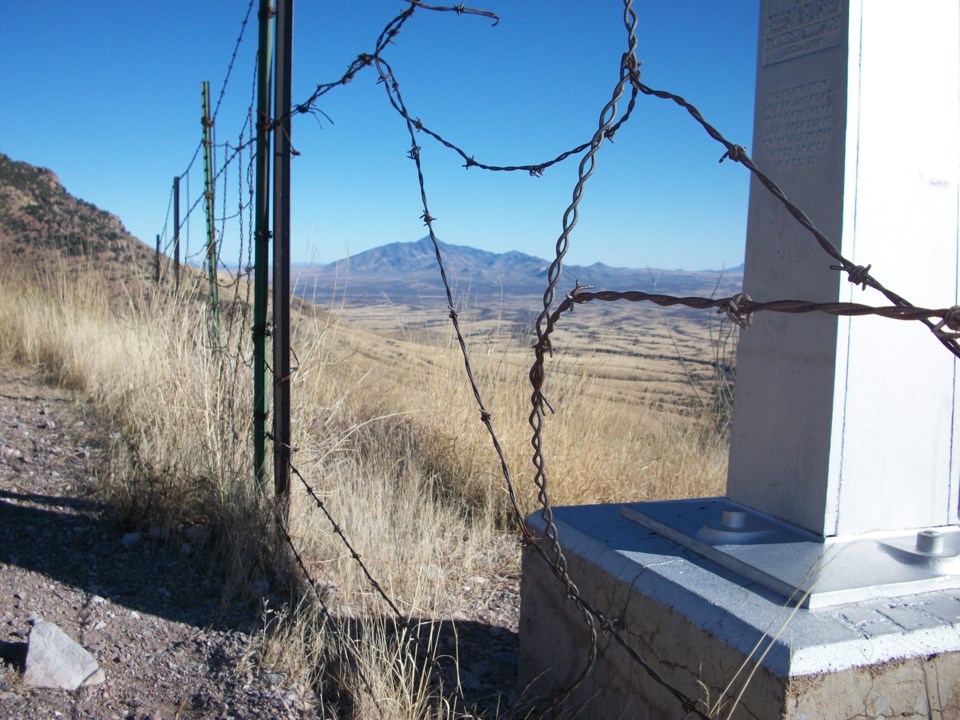At a press conference on Dec. 17, the Canadian federal government of Canada’s border with the United States. These measures were intended to and to avoid a .
The proposal includes expansions of border technologies, including RCMP counterintelligence, 24/7 surveillance between ports of entry, helicopters, drones and mobile towers. But what will this mean for people seeking asylum?
If the U.S.-Mexico border is any indication, it will mean more death.
Criminalizing migration
At the press conference, Dominic LeBlanc, the minister of finance and intergovernmental affairs, . Framed around politics of difference, and relying on the fearmongering trope of migration as a “crisis,” Canada’s new border plan will also cost taxpayers $1.3 billion.
During the press conference, LeBlanc’s remarks conflated migration with trafficking and crime, relying on “,” or the use of criminalization to discipline, exclude, or expel migrants or others seen as not entitled to be in a country. LeBlanc also made direct reference to preventing fraud in the asylum system, with the driving forces behind this new border plan being “minimizing border volumes” and “removing irritants” to the U.S.
However, these framings weaken the global right to asylum, which is an internationally protected right guaranteed by the and of Canada’s own .
Canada’s own courts have also found that the U.S. .
Deadly borders
Since 2018, I have been . I have , starting in Canada, moving south to the U.S.-Mexico border and including various countries in Europe and East Africa, as well as the Palestinian territories. Over the years, I have worked with hundreds of people seeking safety and witnessed the horrific conditions they have to survive.
The Sonoran Desert containing the U.S.-Mexico border has become what anthropologist Jason de Leon calls “.” Researchers have shown that as a result of growing surveillance and deterrence mechanisms. I have witnessed these spaces of death in the Sonoran Desert and European borders, with people on the move succumbing to these sharpening borders.
Canadian borders are not devoid of death. and . Others, like Seidu Mohammed and Razak Iyal, nearly froze to death and lost limbs as a result of frostbite; they later received refugee status and in 2023.
‘Extreme vulnerability’
Throughout the press conference, a clear theme emerged again and again: Canada’s border plan will “expand and deepen the relationship” between Canada and U.S. through border management, including both data sharing and operational support. The border management plan will include an aerial intelligence task force to provide non-stop surveillance. The mandate of the Canada Border Services Agency will also expand, and include a joint operational strike force.
In November, president-elect Donald Trump named as his administration’s “border czar.” Homan explicitly called out Canada after his appointment, calling the Canadian border “.”
Trump has also , referring to him as “governor” and to Canada as the 51st state. And with Trump’s aggressive and the 25 per cent tariff threat, appeasing the incoming administration by strengthening border surveillance at the Canada-U.S. border is the lowest hanging fruit for the Trudeau administration to strengthen its hand.
Creeping surveillance
Border surveillance technologies do not remain at the border. In 2021, communities in Vermont and New York have already raised concerns about possible privacy infringements with the .
There are also fears of growing surveillance and and the as a whole.
And surveillance technologies used at the border have also been repurposed: and facial recognition technologies ubiquitous at airports are also being used on .
The big business of borders
Taxpayers will foot the bill of this new border strategy to the hefty tune of $1.3 billion. This amount is part of a growing and lucrative that is now worth a staggering and projected to grow exponentially to nearly by 2031.
But taxpayers do not benefit. Instead, the private sector makes up the market place of . In this lucrative ecosystem built on fear of “,” it is the private sector actors and not taxpayers who benefit.
Instead of succumbing to the exclusionary politics of the incoming U.S. administration, we should call for transparency and accountability in the development and deployment of new technologies. There is also a need for more governance and laws to curtail these high-risk tech experiments before more people die at Canada’s borders.
Instead of spending $1.3 billion dollars on surveillance technologies that infringe upon people’s rights, Canada should strengthen its asylum system and civil society support. Canada should also remember its international human rights obligations, and resist the U.S. political rhetoric of dehumanizing people who are seeking safety and protection.
![]() Petra Molnar receives funding from the Social Sciences and Humanities Research Council.
Petra Molnar receives funding from the Social Sciences and Humanities Research Council.




